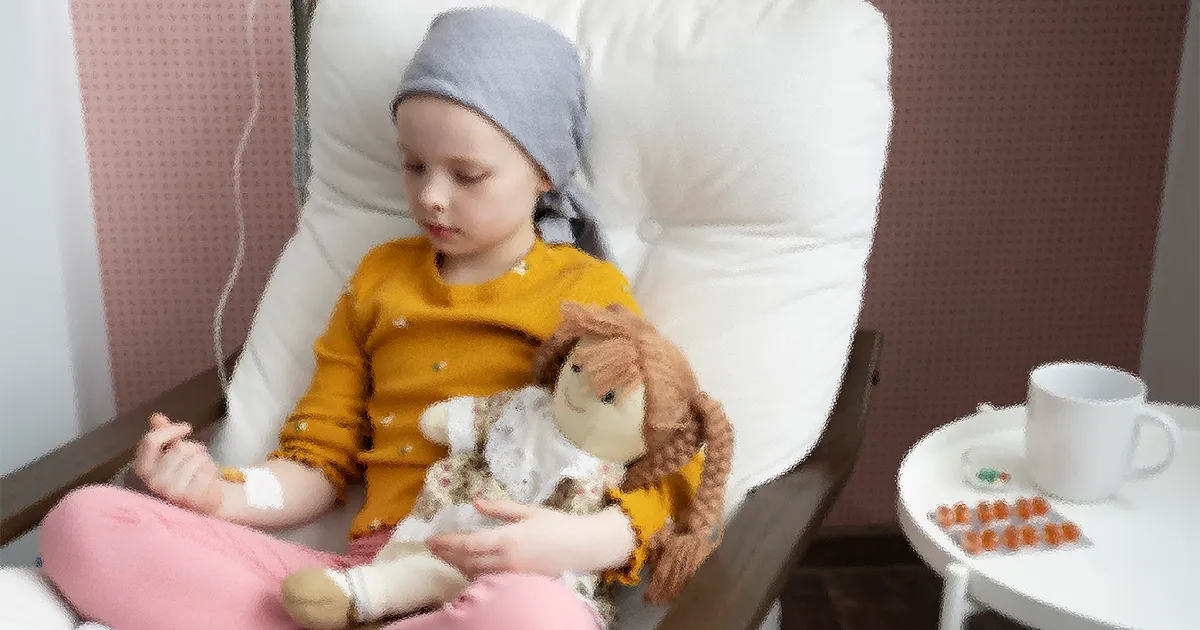
Much has been said about new treatments for leukemia, especially acute lymphocytic leukemia. But what is leukemia, what types exist, what are the symptoms and, to date, what treatments exist? Rádio USP went to hear the doctor from the Division of Pediatric Oncology and Hematology at Hospital das Clínicas and professor at the Faculty of Medicine of Ribeirão Preto (FMRP) at USP Carlos Alberto Scrideli.
Leukemia is a cancer of the blood, more specifically of white blood cells, which are our body’s defense cells. In Brazil, there are 10 thousand new cases per year, according to data from the National Cancer Institute (Inca). According to Scrideli, changes in precursor cells, which give rise to white blood cells, can lead to this type of cancer. “The majority of cases, around 95%, are not hereditary. But some genetic diseases can increase the risk of developing the disease, so people with these conditions need to be monitored more closely.”
The professor explains that there are two types of white blood cells, one is of lymphoid lineage, which will evolve into lymphocytes, and the other is of myeloid lineage. Thus, we have two main types of leukemias, lymphoid and myeloid. These leukemias can be further subdivided according to various characteristics of the leukemic cells.
“In addition to this classification into lymphoid and myeloid, they can be divided into acute and chronic leukemias. Acute diseases have a more rapid course of the disease and are characterized by a proliferation of immature cells, called blasts. Chronic leukemias are leukemias that progress more slowly and have a greater number of mature cells, which are still able to perform part of the normal functions of blood cells”, adds Scrideli.
Regarding the age group and gender with the most cases of leukemia, Scrideli says that acute lymphoid leukemias are more common in children and adolescents, while myeloid and chronic leukemias are common in adult patients. “These leukemias are a little more common in male patients, around 20% when compared to females.”
Regarding the chances of a cure, Scrideli remembers that they are different for children and adults. Acute lymphoid leukemia in children, for example, has an 85% to 90% chance of being cured. In children who have myeloids, this percentage drops a little, between 60% and 65%. Chronic leukemias, in general, have no cure.
The teacher highlights the importance of raising awareness about leukemia. “Early diagnosis and appropriate treatment greatly increase the chances of curing these patients.” Another factor that needs awareness, according to the professor, “is raising awareness so that people become voluntary bone marrow donors”.
Main symptoms
As leukemia is a disease of the bone marrow, and this marrow is producing diseased cells and no longer normal blood cells, the patient’s first symptoms arise as a result. Generally, these patients, as they do not produce red blood cells, will experience anemia. The signs of anemia are: pale skin and mucous membranes, weakness and tiredness. “Patients may experience easy bleeding, purple spots on the skin or red dots, which we call petechiae, due to a decrease in the production of platelets, which are also produced in the bone marrow and are responsible for an important part of bleeding control” , warns Scrideli.
The professor also says that those affected with leukemia may have a greater tendency to infection and these can be more serious, since the line of defense is quite compromised. It is common to notice the appearance of lumps on the neck, armpits, thighs, especially on the chest, abdomen and belly. “Other symptoms that we encounter relatively frequently are pain in the bones, sometimes swelling and pain in the joints.”
For diagnosis, Scrideli states that initially a common blood count is suggested, which can show anemia, a decrease in platelets, an increase or decrease in white blood cells and, in most cases, it is already possible to see leukemic cells in the blood. “But the definitive exam has to be done by examining the bone marrow itself, the biopsy.”
Treatment
Treatment for leukemia is based on a series of different drugs, called chemotherapy drugs. “These drugs can be applied through a vein, taken through the mouth or even applied intrathecally, similar to what is done in spinal anesthesia. In addition to conventional chemotherapy, some subtypes of leukemia can be treated with specific drugs, called targeted drugs. These drugs are used for cases with specific genetic alterations, which are found only in these leukemic cells, such as, for example, tyrosine kinase inhibitors, used for Philadelphia Positive leukemia, the use of transretinoic acid for an also specific myeloid leukemia, the so-called acute promyelocytic leukemia (APL). “These targeted drugs have greatly improved these leukemias with very low chances of cure. Today, with these targeted drugs we can cure many cases”, adds Scrideli.
The professor also recalled the new technology used to treat B-cell acute lymphoblastic leukemia and B-cell non-Hodgkin lymphoma. “Recently, within this immunotherapy group, we have treatment with CAR-T cells. It’s an interesting technology in which you will harvest the patient’s own defense cells, program these cells to recognize and destroy leukemia cells.” The professor says that, in those more resistant and more serious cases, sometimes the only option is a bone marrow transplant, “which is also one of the types of treatment that we have used a lot in these patients.”
